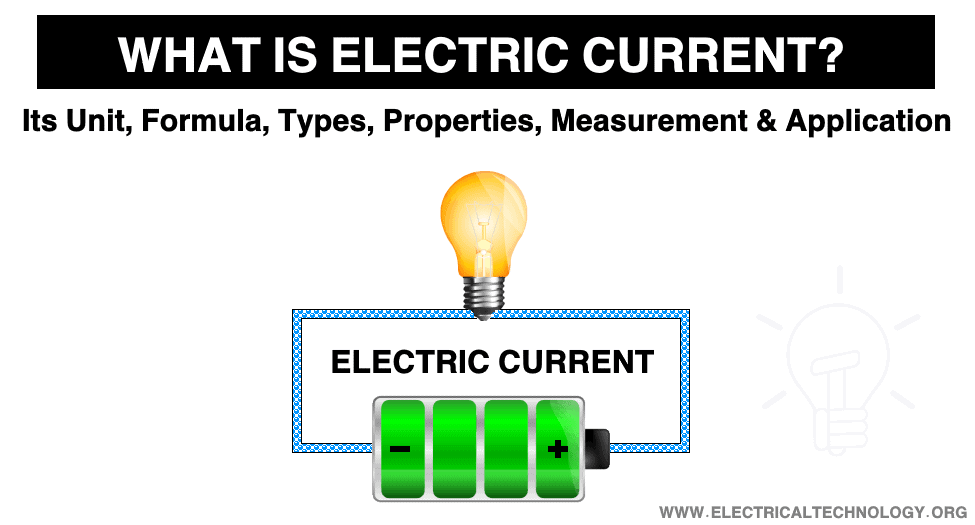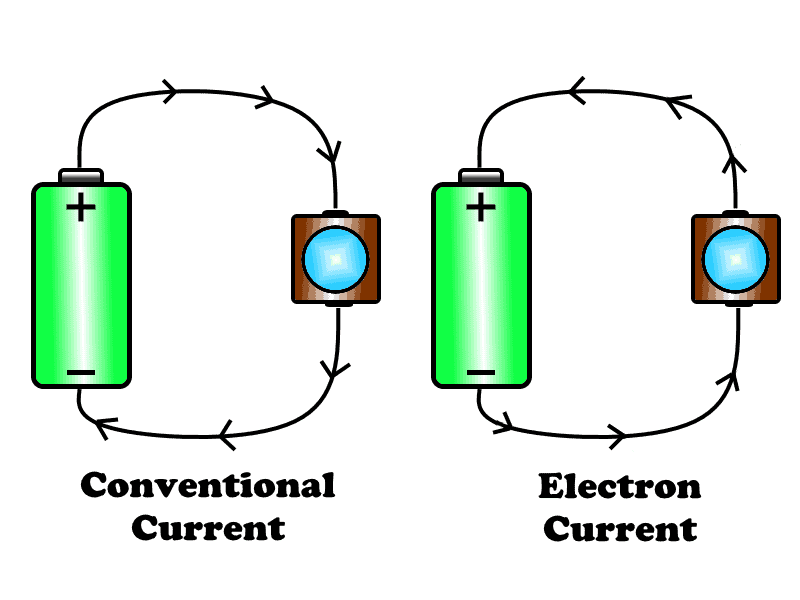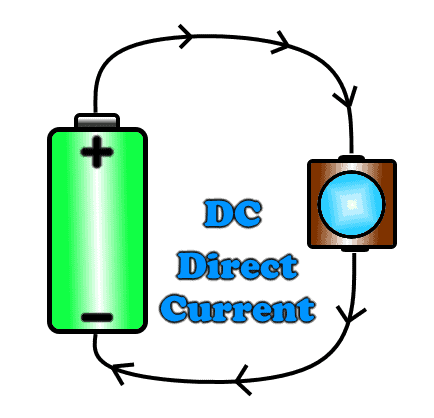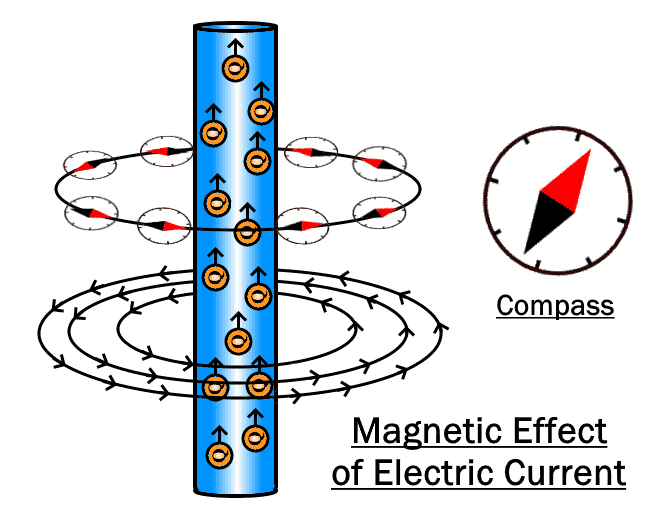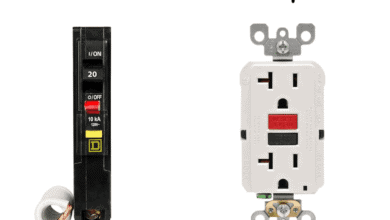What is Electric Current, its Unit, Formula, Types & Applications
Electric Current, its Unit, Formula, Types, Properties, Measurement & Applications
In this modern age of technology, almost everything runs on electricity. It plays an important role in our daily life & we cannot imagine life without it. Television, cellphone & heater etc all depend on electricity. Apart from our home, electricity plays a huge role in the industrial & health sectors as well. There is no need of mentioning how electrical equipment around the world is used for helping people in every aspect of life.
Electric current is the reason electrical & electronics engineering exist. Its study revolves around the utilization of the electricity for the betterment of human beings.
Related Posts:
- What is Resistance? Resistivity (ρ) & Specific Resistance Ω.
- What is Voltage? its Unit, Formula, Types & Applications
- What is Electrical Power? Types of Electric Power and their Units
Definition of Electric Current:
The flow of charge particles or the rate of flow of charge in a conducting medium is called electric current. The charge particles could be negative (electron) or positive (proton).
Just like a river current, which is the continuous flow of water molecules, an electric current is the continuous flow of charge particles. The amount of charge flowing through a certain point in a conducting medium in a specific time is called electric current.
Electric current is one of the seven base quantities. It is denoted by the letter “I”.
- Related Post: Difference Between Current and Voltage
Formula & Unit of Electric Current
As we know the electric current is the rate of charge flow i.e. charge/time. So the electric current can be calculated by formulae;
Electric Current (I) = Charge (Q) / Time (t)
Since the charge is measured in coulombs & time in seconds, the unit of electric current becomes coulombs/sec. The SI unit of electric current is Ampere (A).
Ampere
One Ampere is the amount of current where one coulomb of charge flows through a certain point in a conducting medium in a time of one second. Or a conductor carrying one ampere of charge is said to have a charge flow of one coulomb per second. For more details, check the latest post about “What is Ampere (A)? Unit in Electrical Engineering & Physics“.
Conventional Current & Electron Current
As we know that the electric current is the flow of charge. The charge could be positive or negative. Due to the motion of these two types of charges the current is divided into two types of electric current flow:
Electron Current Flow:
Electron current flow is the movement of negative charge particle also known as the electron. The direction of electron current is from the negative terminal of the battery into the external circuit & into the positive terminal of a battery or cell. It is because the electron is negatively charged & the same charges repel each other while opposite charges attract.
Electron Current flow is assumed in electronic engineering and circuits while solving and analyzing the circuits.
Conventional Current Flow:
The flow of positively charge particles in a conductor is called conventional current. The direction of the conventional current is from positive to the negative terminal of the battery. Or the conventional current moves from higher potential to lower potential.
Conventional Current flow is assumed in electrical engineering and circuits while solving and analyzing the circuits.
For more details, read the previous post about Difference between Electron Current and Conventional Current.
History of Conventional & Electron Flow
Practically, the electric current is the flow of electron (negatively charged particle) & it moves from the negative terminal out to the external circuit & then into the positive terminal of a cell. But it was considered during the discovery of electric current that the electric current flows from higher potential to lower (that means from positive terminal to the negative terminal), which is not correct. Conflict arises due to the use of conventional & electron flow of current.
As a matter of fact, the current direction does not make any difference as long as you keep consistency. The properties of the circuit remain the same in both conditions. However, the idea of conventional current was used for certain components (diodes etc) & rules (right-hand rule) that would cause confusion if electron current flow is established as a standard for the new students.
- Related Post: Why Do Electronic Circuits Use DC Current instead of AC?
Ever since then, the conventional current became the standard current direction & is still used.
Types of Electric Current
Based on the flow of charge, the current is divided into two types;
Direct Current (DC)
The direct current is a type of electric current whose direction does not change & conventionally it flows from the positive terminal of the battery to the negative terminal of the battery.
It is unidirectional & it can be stored in batteries. All types of storage cells provide a direct current that is why there are positive & negative markings on them to show the direction of the current flow. Applying reverse polarity of DC current may damage your circuit or equipment.
Alternating Current (AC)
The type of electric current whose direction changes continuously throughout the time is called alternating current or AC.
The number of times it changes its direction in a second of time is called its frequency. We normally use AC in our homes having a frequency of either 50 or 60 Hz depending on your region.
Since alternating current change its direction, its polarity does not matter. However, the alternating current cannot be used for DC application or stored, at least not in its AC form.
- Related Post: Is Lightning AC or DC?
Conversion between AC & DC
We use Alternating current & direct current both in our daily life. Alternating current cannot be stored in batteries & it cannot power our daily life digital electronics such as cell phones, computers & laptops, etc. The same is the case with DC, we cannot use it to power any AC appliances. In order to utilize both of them, we use converters that convert between AC & DC.
We use Rectifiers, a form of circuit made from semiconductor diodes or thyristors, to convert the alternating current into direct current. And we use Inverters, made from high-speed switching transistor, to convert the direct current into alternating current.
Both of these converters are used in our daily life. The power adapter, we use for our phones or laptops contains a rectifier that smooth the alternating wave into a unidirectional direct current. The inverters are used for providing backup power in case of emergency or power shortage in industries as well as our homes.
- Related Post: AC or DC – Which One is More Dangerous And Why ?
Effect of Electric Current
Some of the effects due to the flow of electric current are given below;
Heat
As we know that an electric current is a form of energy & it can be converted into other forms. But when it flows in a conductor, it generates heat due to the presence of resistance in a conductor. The electrons lose some energy in the form of heat due to the collision inside the conductor.
This heat generated is directly proportional to the square of current providing resistance is constant. An increase in the current will increase the heat generated & this is what actually causes an electrical fire.
Magnetic Field
When current flows through a conductor it creates a magnetic field around it. The strength of this magnetic field also depends on the amount of current passing through the conductor at that point.
The magnetic field can be sensed by placing a compass over the conductor when its carrying current. The needle will deviate showing the presence of a magnetic field.
Electromagnetism is also a phenomenon where the magnetic field is generated using the flow of electricity through a wounded conductor. The wounded conductor increases the strength of the magnetic field at a specific point.
- Related Post: Difference Between Electric Current and Electric Charge
Chemical Effect
Electric current is the flow of electron, so passing a current through a chemical will result in a chemical reaction. Electrolysis, Electroplating are some of the processes that utilize its chemical effect.
How to Measure Electric Current?
The unit of electric current is ampere and the instrument used for the measurement of the current is called Ammeter.
To measure the current, the ammeter is connected in series (not in parallel) so that the current pass through it. A simple ammeter uses a galvanometer, which is a needle attached with a coil that deflects in the presence of current). The angle of deflection represents the amount of current passing through the conductor.
In the modern era of digital technology, people use digital multimeter DMM. It provides multiple measurement modes for different quantities. Current can be easily measured using a DMM.
How to calculate Electric Current?
Current can be calculated in different scenarios which depend on the available related quantities such as voltage in volts, power in watts and resistance in ohms etc. Let’s see the following solved examples to get the basic idea.
Example 1:
Find the value of current in Amps flowing in the 15Ω resistor if the applied voltage across it 60V.
Solution:
According to Ohm’s law:
I = V ÷ R
Putting the values
I = 60V ÷ 15Ω
I = 4 Amps
Example 2:
Calculate the current in Amps in the 36W light bulb If the value of supply voltage across it is 24V.
Solution:
We know that
I = P ÷ V
Putting the values:
I = 36W ÷ 24V
I = 1.5 Amps
Example 3:
Determine the value of required current in amps to glow a light bulb having 80W and 5Ω resistance .
Solution:
The derived equation from P = V x I where putting V = I x R which becomes P = I2 R.
I = √(P ÷ R)
Putting the values:
I = √(80W ÷ 5Ω)
I = √(16)
I = 4 amps.
Related Posts:
- Why Can’t We Store AC in Batteries instead of DC?
- Difference between AC and DC Transmission System
- Difference between AC and DC Resistance
- What Happens When an AC Line Touches a DC Line?
